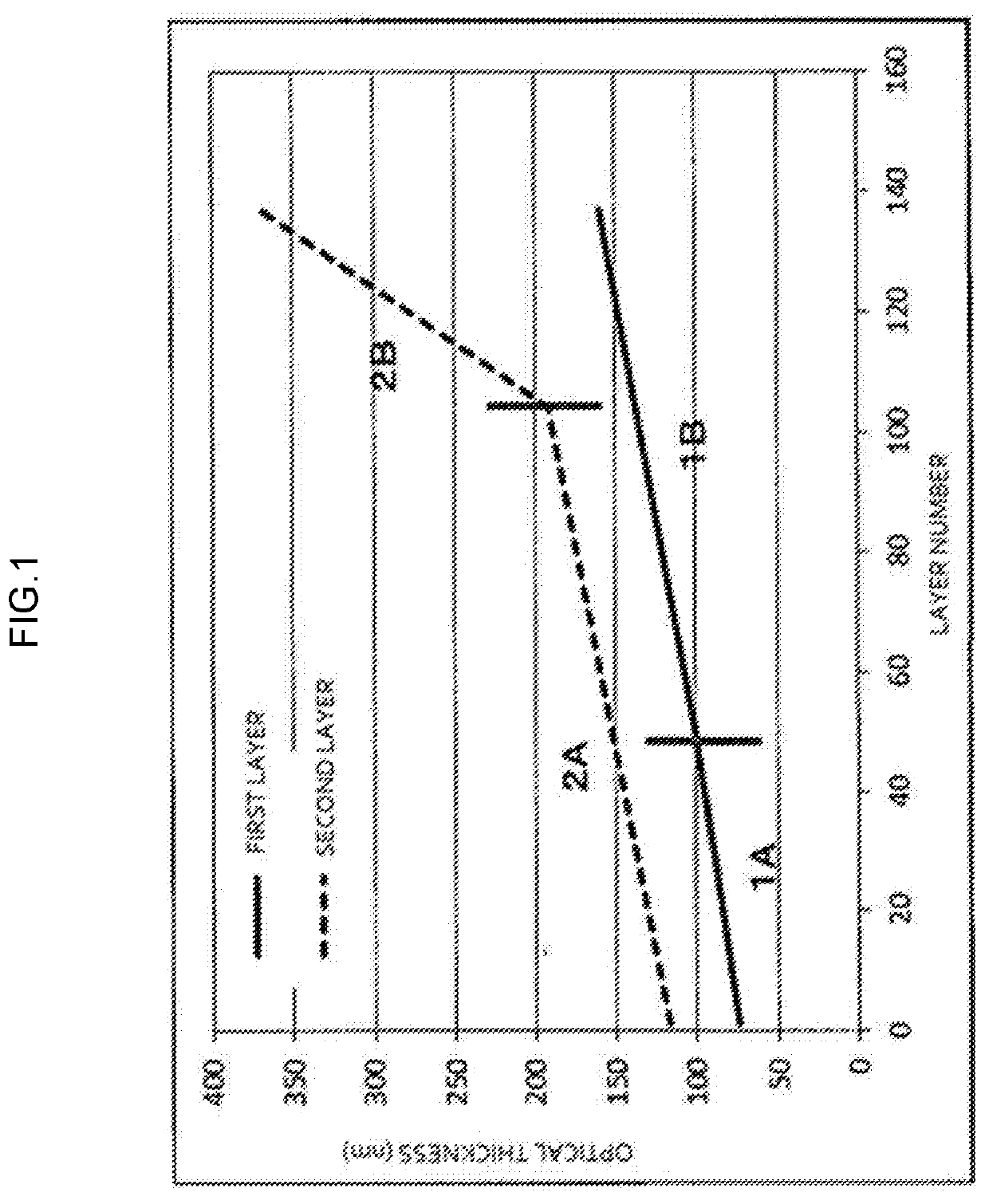Multi-layer layered film
- Summary
- Abstract
- Description
- Claims
- Application Information
AI Technical Summary
Benefits of technology
Problems solved by technology
Method used
Image
Examples
production example 1
[Production Example 1] Polyester A
[0137]As polyester for the first layer, dimethyl 2.6-naphthalene dicarboxylate, dimethyl terephthalate, and ethylene glycol were subjected to transesterification in the presence of titanium tetrabutoxide, and subsequently to polycondensation reaction, to prepare copolyester (intrinsic viscosity of 0.64 dl / g) (o-chlorophenol, 35° C., the same is true with the following) in which 95 mol % of an acid component was a 2,6-naphthalene dicarboxylic acid component, 5 mol % of the acid component was a terephthalic acid component, and a glycol component was an ethylene glycol component.
production example 2
[Production Example 2] Polyester B
[0138]As polyester for the second layer, dimethyl 2,6-naphthalene dicarboxylate, dimethyl terephthalate, ethylene glycol, and trimethylene glycol were subjected to transesterification in the presence of titanium tetrabutoxide, and subsequently to polycondensation reaction, to prepare copolyester (intrinsic viscosity of 0.63 dl / g) in which 50 mol % of an acid component was a 2,6-naphthalene dicarboxylic acid component, 50 mol % of the acid component was terephthalic acid component, 85 mol % of a glycol component was an ethylene glycol component, and 15 mol % of the glycol component was a trimethylene glycol component.
example 1
[0139]After the polyester A was dried at 170° C. for five hours for the first layer, the polyester B was dried at 85° C. for eight hours for the second layer, and each polyester was supplied to each of the first and second extruders. The polyester was heated to a temperature of 300° C. to be brought into a molten state, the first layer polyester was branched into 139 layers, and the second layer polyester was branched into 138 layers. Then, the first layers and the second layers were layered alternately, and a multi-layer feed block device including comb teeth to give a layer thickness profile as shown in Table 1 was used to form a melt with a total of 277 layers in a layered state. With the layered state held, on both sides thereof, the same polyester as the polyester for the second layer was introduced from a third extruder into a three-layer feed block, to further dispose buffer layers on both sides in the lamination direction of the melt with 277 layers in the layered state (bot...
PUM
| Property | Measurement | Unit |
|---|---|---|
| Thickness | aaaaa | aaaaa |
| Thickness | aaaaa | aaaaa |
| Thickness | aaaaa | aaaaa |
Abstract
Description
Claims
Application Information
 Login to View More
Login to View More - R&D
- Intellectual Property
- Life Sciences
- Materials
- Tech Scout
- Unparalleled Data Quality
- Higher Quality Content
- 60% Fewer Hallucinations
Browse by: Latest US Patents, China's latest patents, Technical Efficacy Thesaurus, Application Domain, Technology Topic, Popular Technical Reports.
© 2025 PatSnap. All rights reserved.Legal|Privacy policy|Modern Slavery Act Transparency Statement|Sitemap|About US| Contact US: help@patsnap.com

